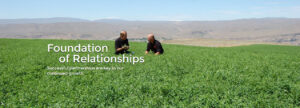Key Factors for a Successful Compost Pile
Composting horse manure is beneficial to your horse’s health. A properly managed compost pile will reach temperatures that are high enough to kill fly larvae, which reduces the fly population in the area, and also destroys weed seeds. The high temperature in the compost pile will also wipe out parasites and pathogens, such as viruses and bacteria that could cause diseases in horses.
There are several things to consider in creating and managing a successful compost pile.

Pile size. A compost pile that is about seven square feet at the base and at least three feet high will result in the best heating. Heat is generated when organic material decomposes. However, if the pile is too short, the heat will quickly dissipate and will not reach temperatures that are high enough to kill parasites, bacteria, viruses, and weed seeds.
Airflow. It is important to keep air in the compost pile to minimize odors and achieve high temperatures. Proper airflow will also speed up the decomposition process. Turning the pile at regular intervals (especially during the first few weeks) speeds up decomposition. Turning ensures that air reaches all areas of the pile and thoroughly mixes particles.
Temperature. Make sure to monitor the temperature of the compost pile. Compost thermometers (which are long-stemmed) can usually be found at home and garden stores. During the early stages of decomposition, the pile temperature may range from 50 – 110oF. As decomposition progresses, the temperature increases to between 110oF and 160oF and should remain there at least several days. Following the temperature peak, the pile temperature will gradually decrease to the ambient air temperature over a period of several weeks. While it is important that the temperature in the pile reaches at least 160oF, temperatures above this level are detrimental to the organisms that decompose the material in the pile. If the pile temperature goes above 160oF, reduce the size of the pile. Manure will decompose in approximately three to six months in the winter and in one to two months during the summer.
Moisture. The amount of water in a compost pile will also affect decomposition. Excess water will fill the air spaces and restrict airflow in the compost pile. Compost piles that contain too much moisture may develop bad odors and will decompose very slowly. Conversely, too little moisture restricts growth of organisms that decompose material, thereby preventing the pile from heating up. A handful of material grabbed from the center of the compost pile will help you determine if its moisture content is adequate. If the material drips without squeezing – it is too wet. If the material is dry and crumbles from your hand after squeezing – it is too dry. If the material retains its shape after squeezing and does not release water, but your hand is damp – it is just right. Maintain adequate moisture level by covering the pile or adding the water as conditions change. Turning the pile at more frequent intervals is another method to dry out a compost pile if it is too wet.
Location. A level area with good drainage that is on fairly high ground is the best place to put a compost pile. Put the pile in a place that is convenient to stall and paddock areas and is also within reach of a hose. Be sure to have an adequate buffer zone between your compost pile and streams, wetlands, and residences.
Ingredients. The organisms that decompose organic material require carbon for energy and nitrogen for growth. Ideally, the ratio of carbon:nitrogen should be between 25:1 and 30:1. Plant materials provide carbon while manure, grass clippings, and hay provide nitrogen. Horse manure by itself contains the ideal ratio of carbon:nitrogen. However, you will end up with too much carbon in your compost pile if you add too much bedding. In this case, the decomposition process will be quite slow and material in the pile may not completely compost. You can offset the high level of bedding in the pile by adding materials that contain high levels of nitrogen, such as grass clippings or chicken manure.
To receive this blog from Anderson Hay directly in your email please subscribe above on the right.
We’d appreciate you taking a minute to fill out our blog survey by clicking on the link below.
Reference
Paige, Jessica. A Guide to Composting Horse Manure. http://whatcom.wsu.edu/ag/compost/horsecompost.htm


